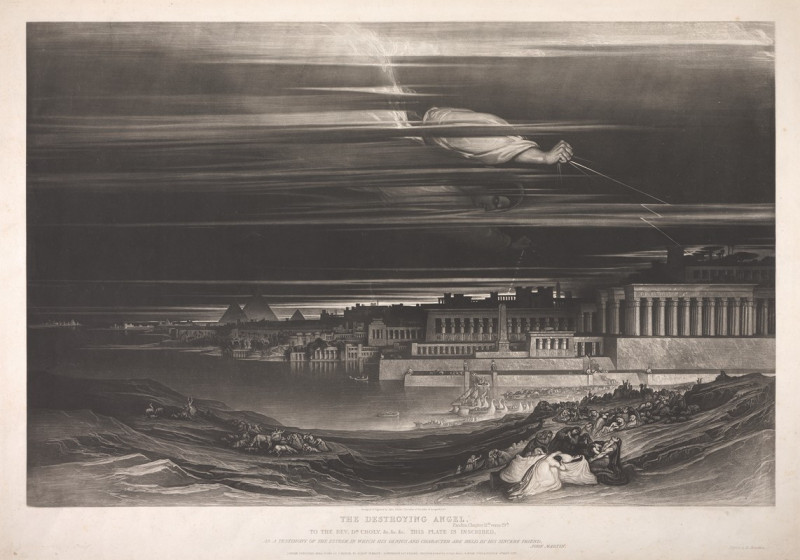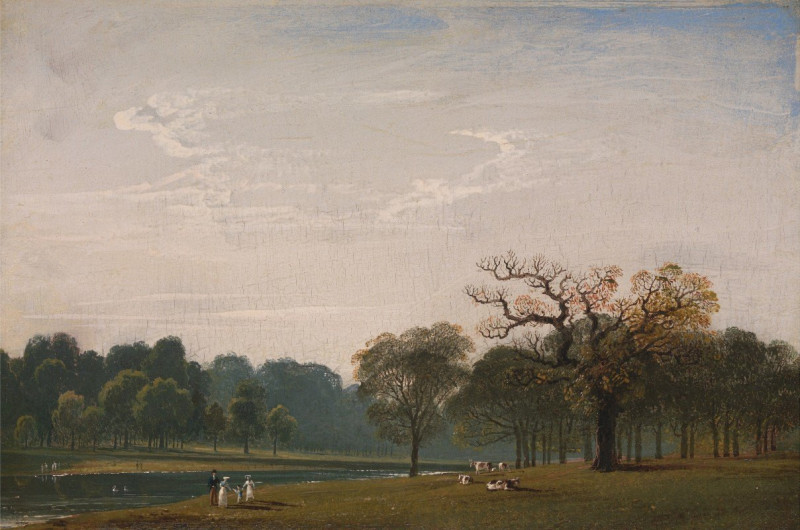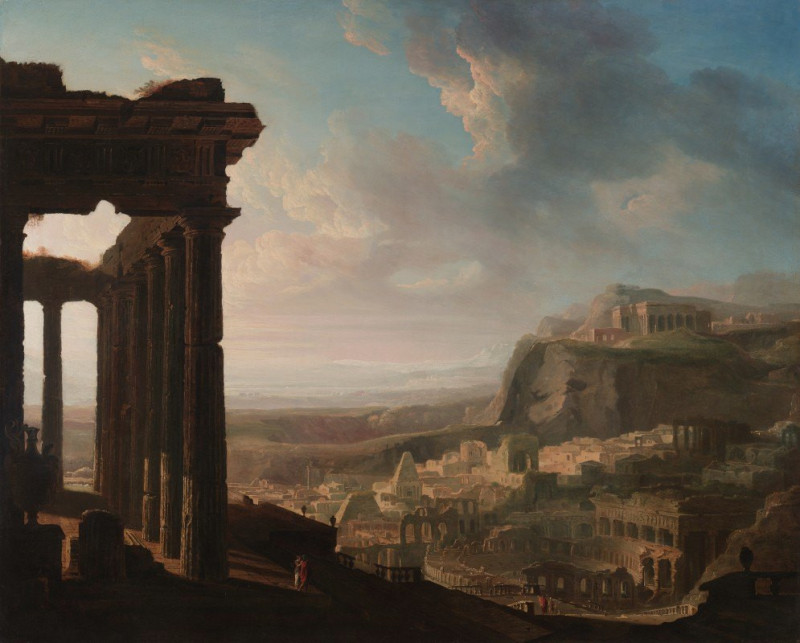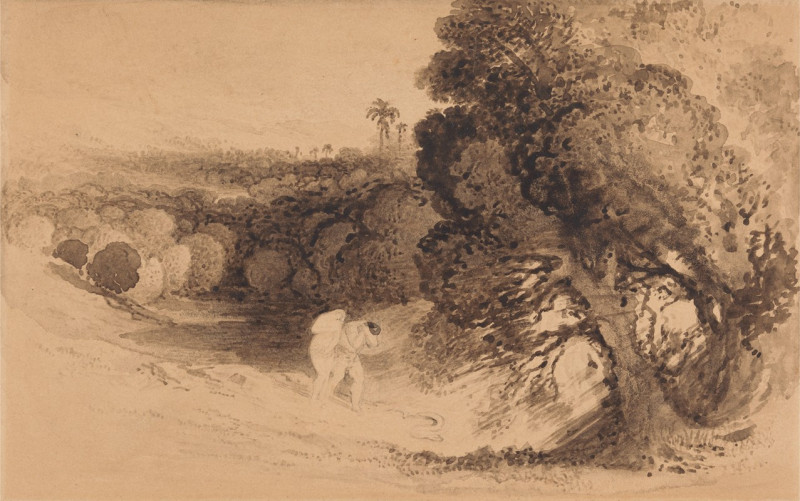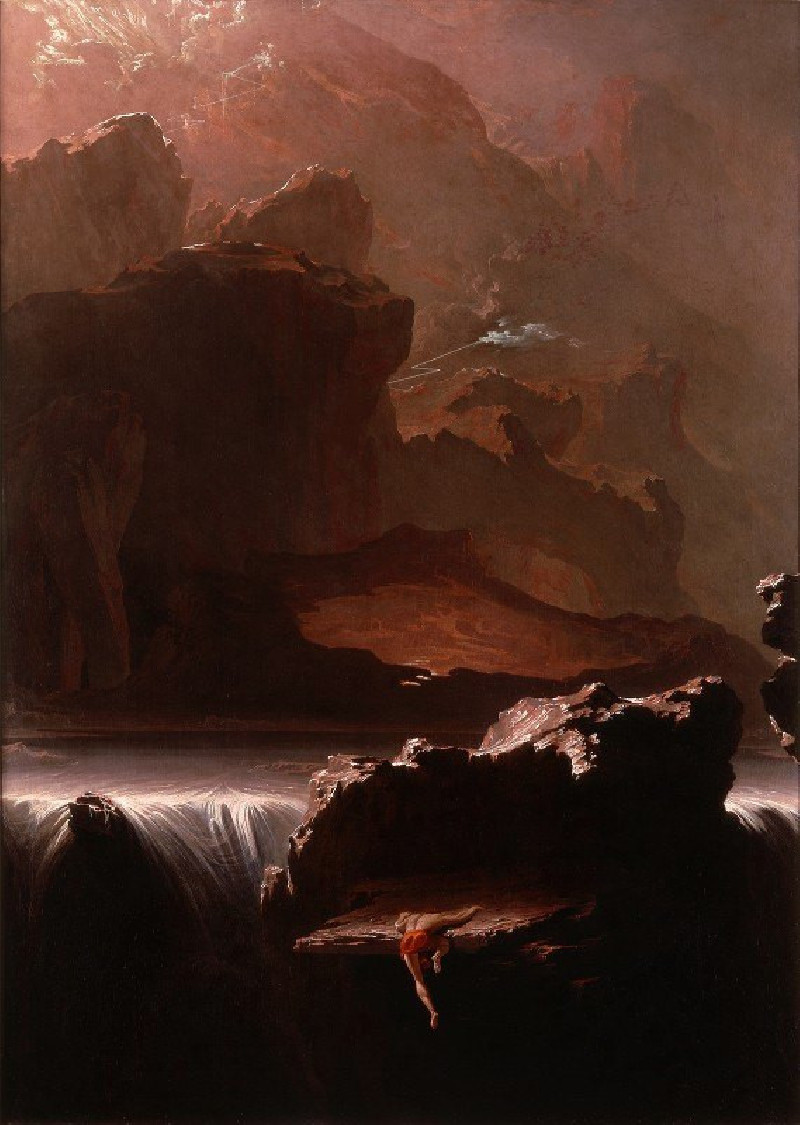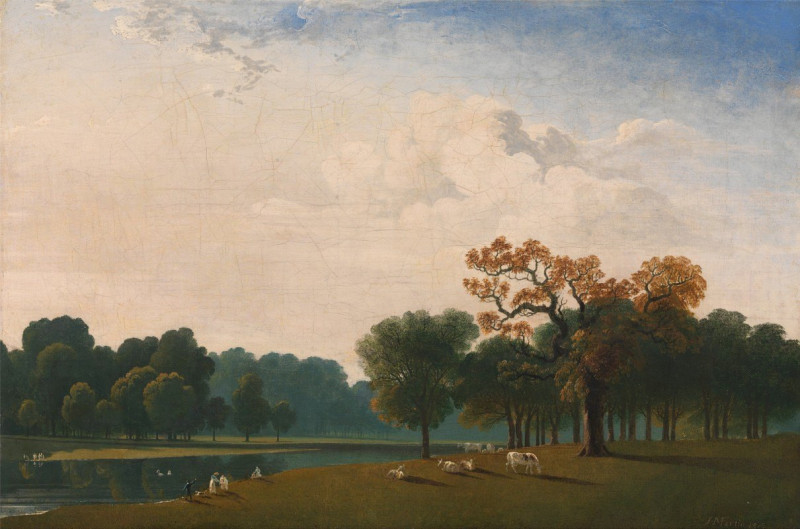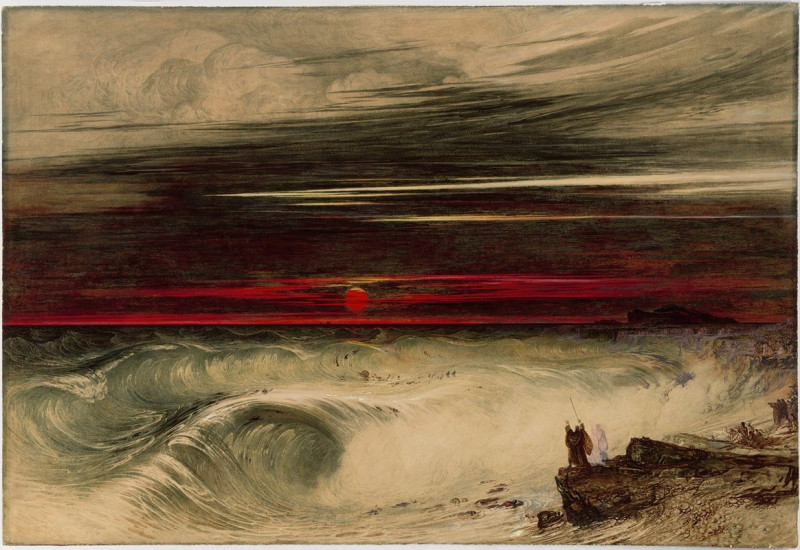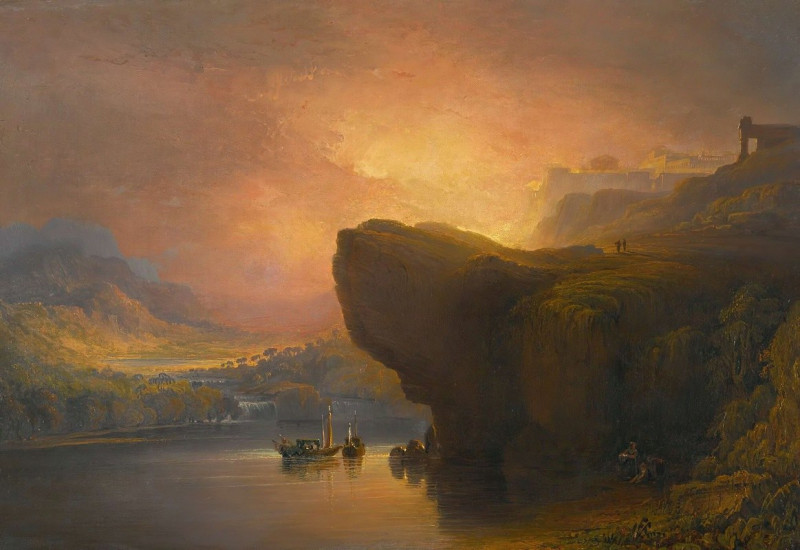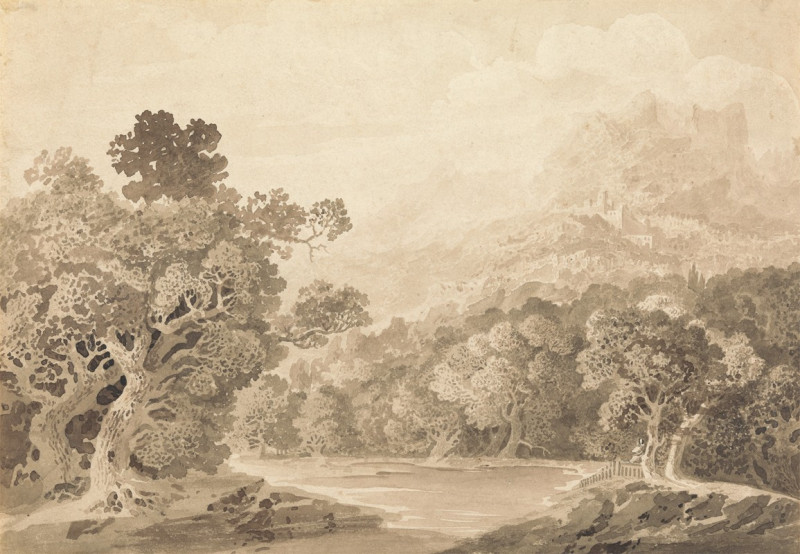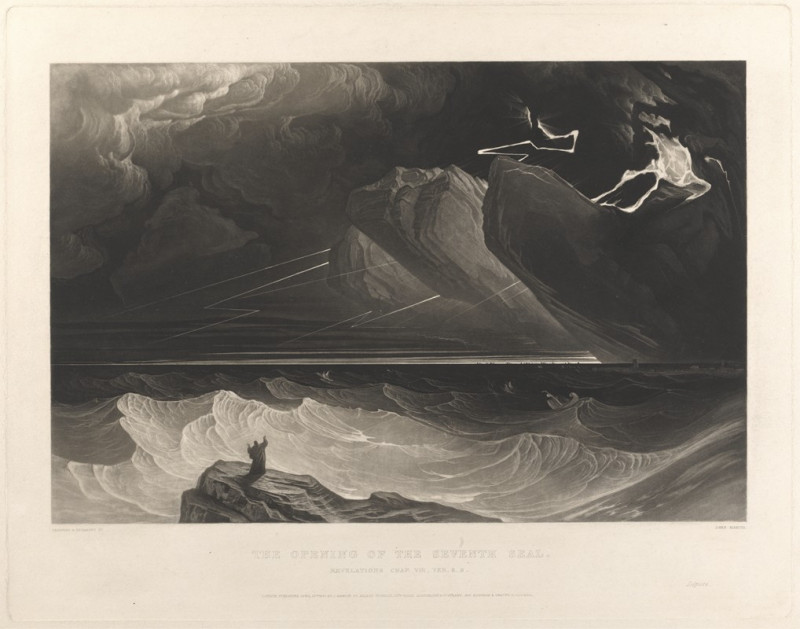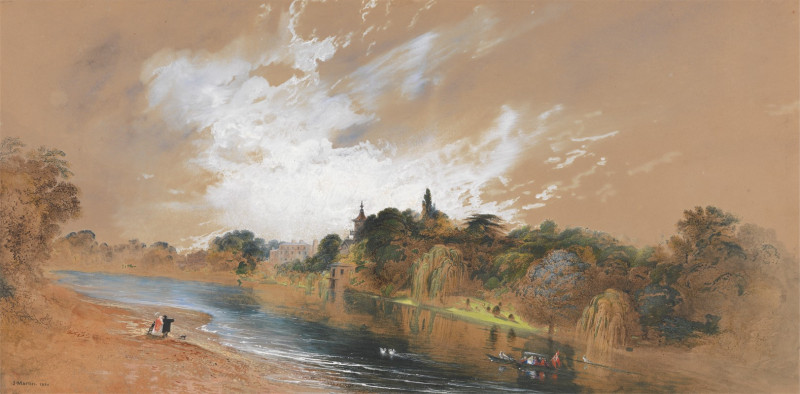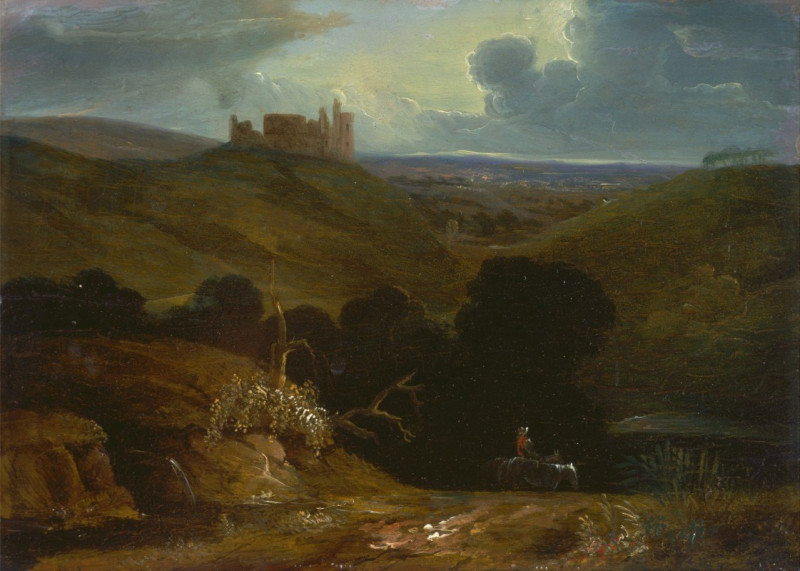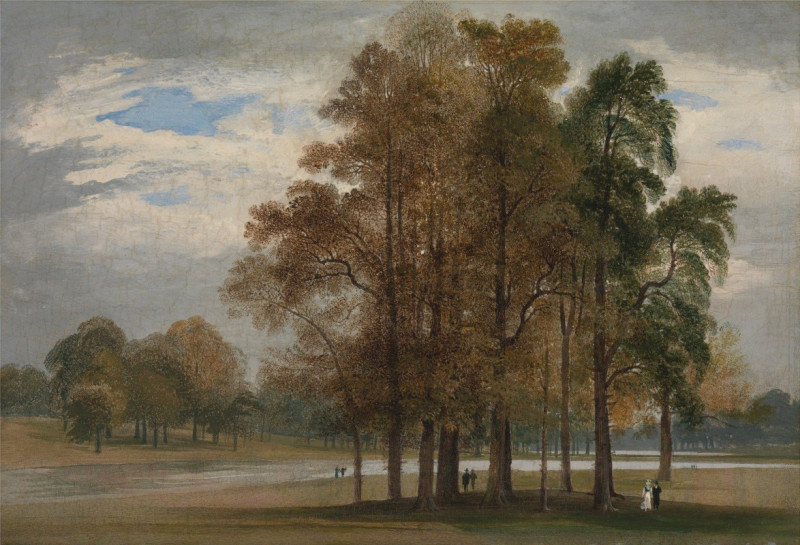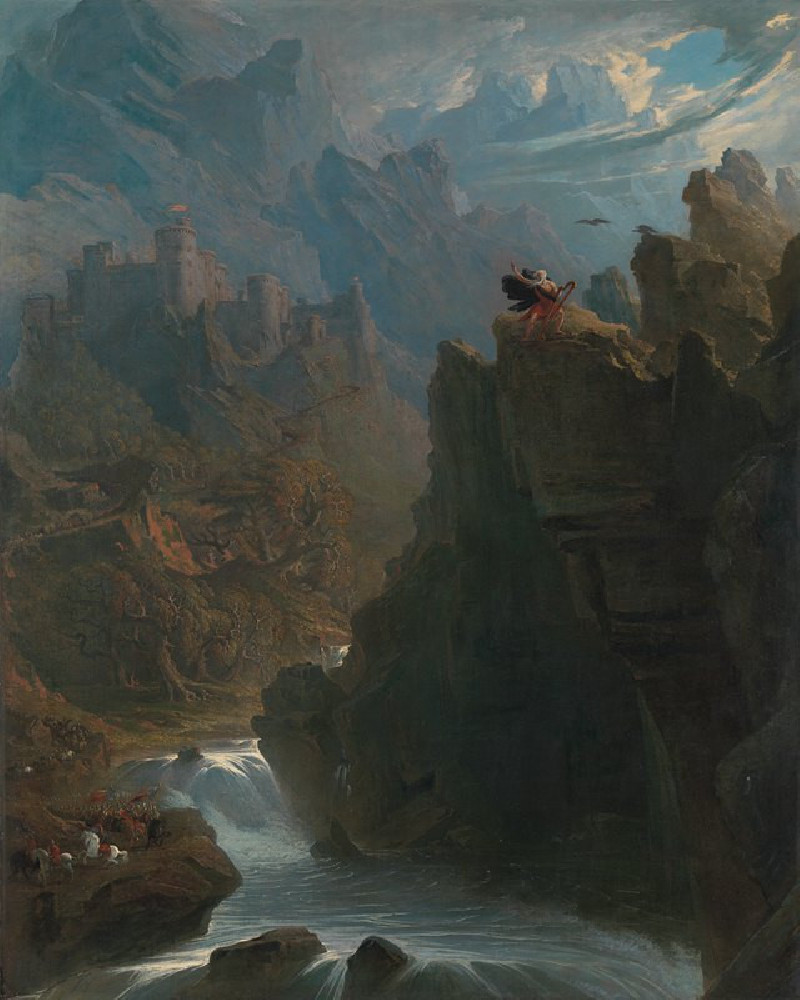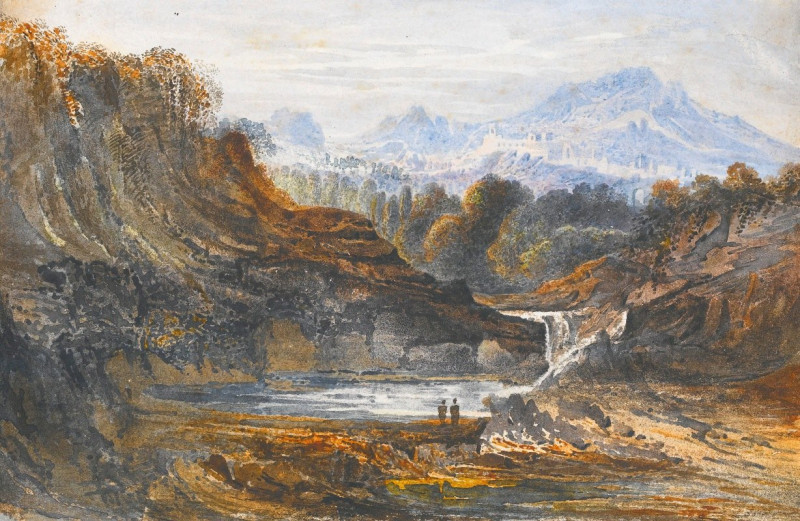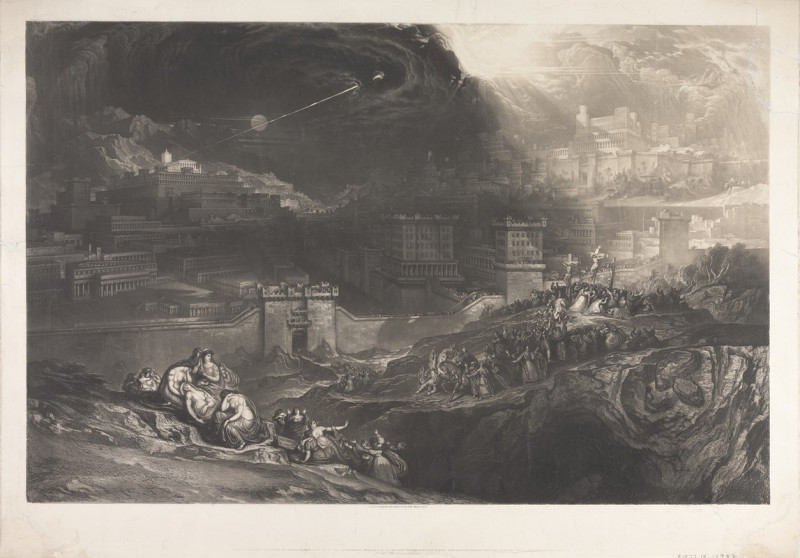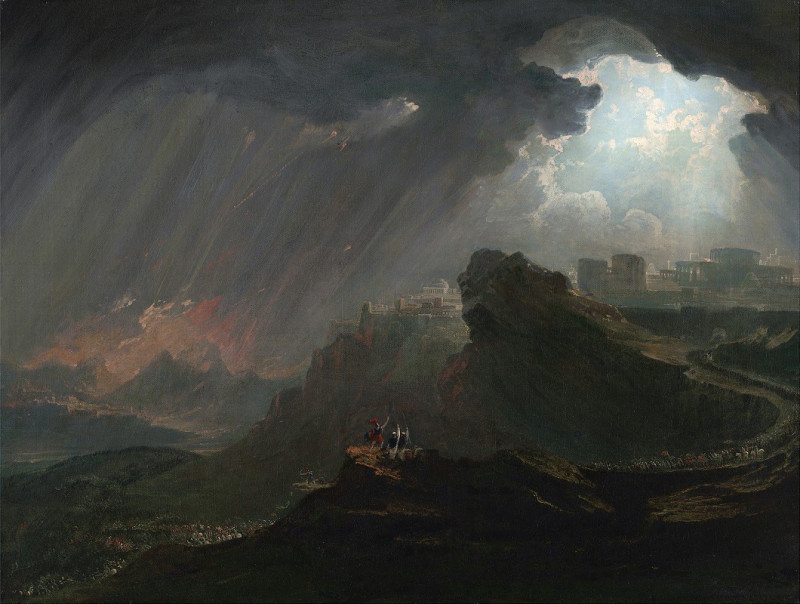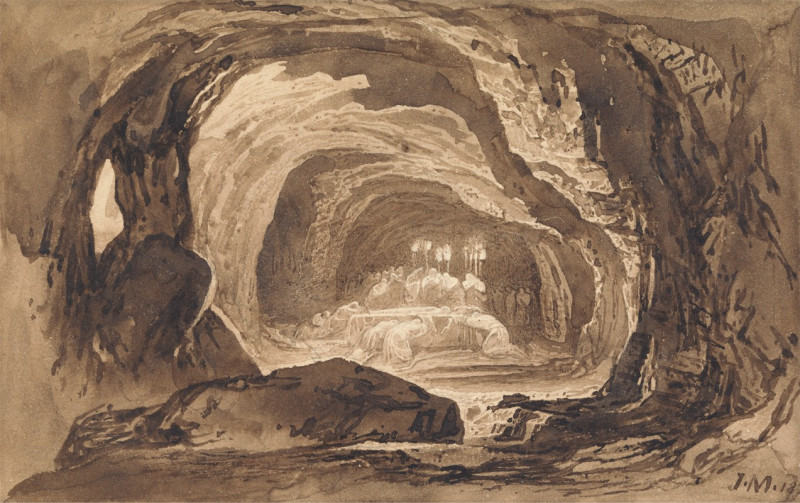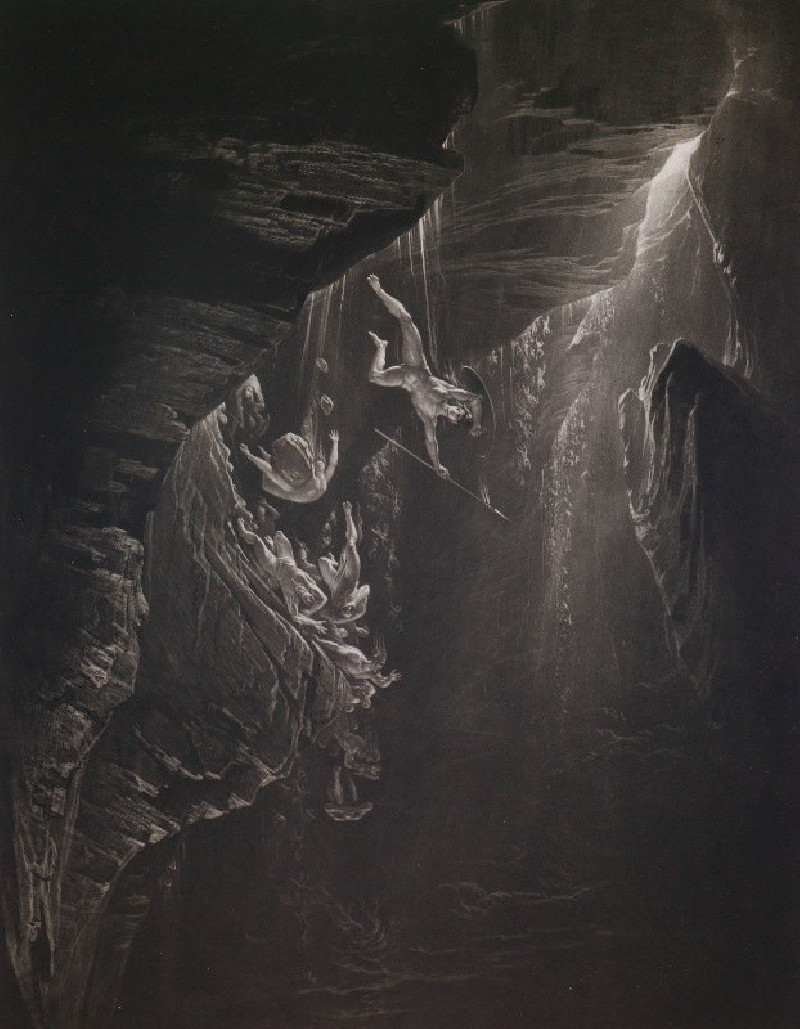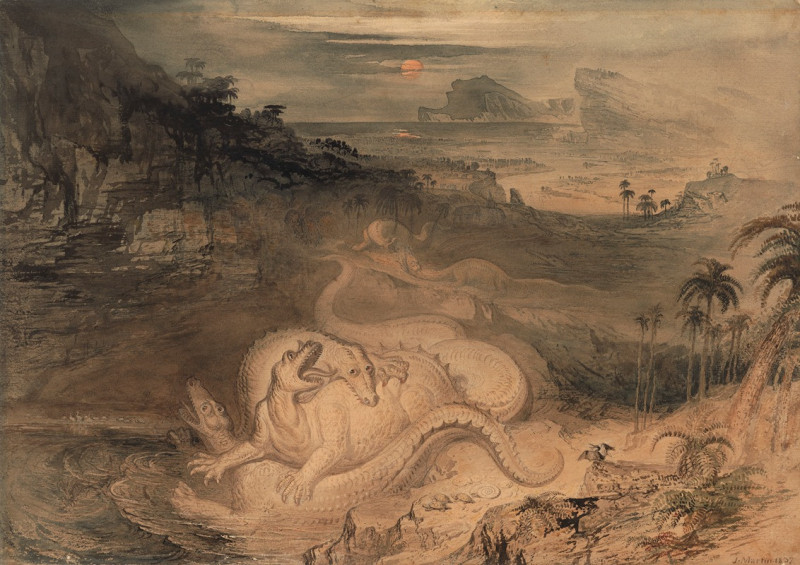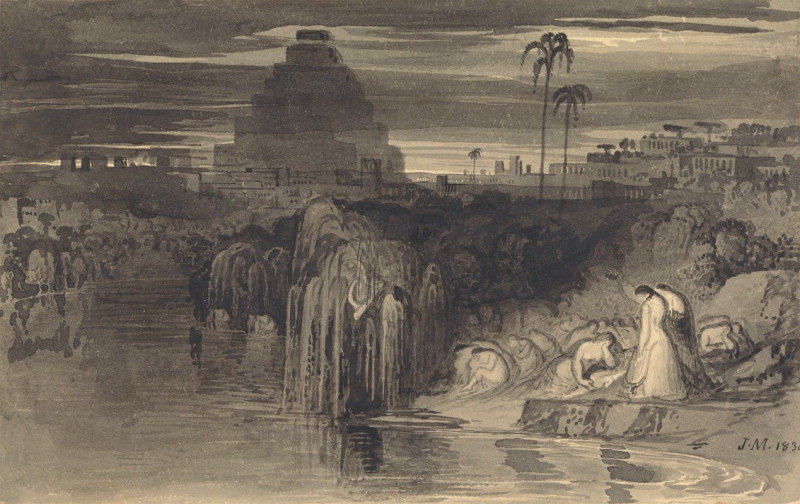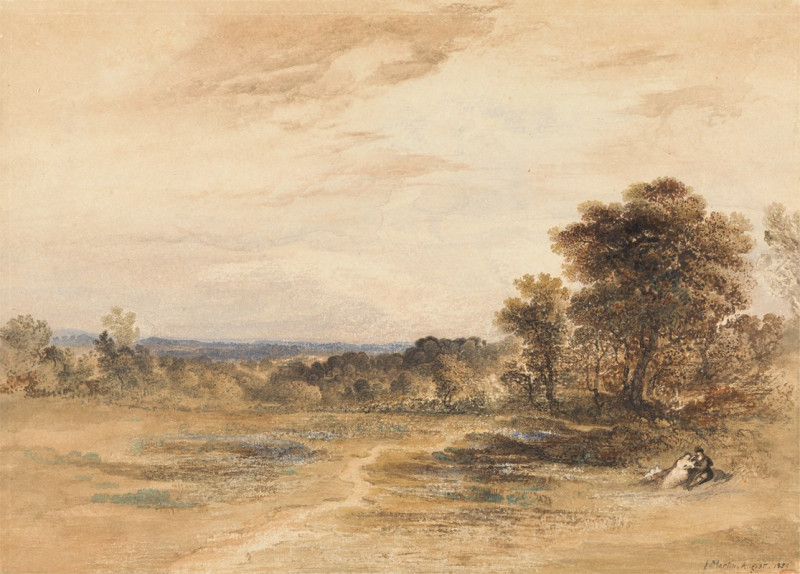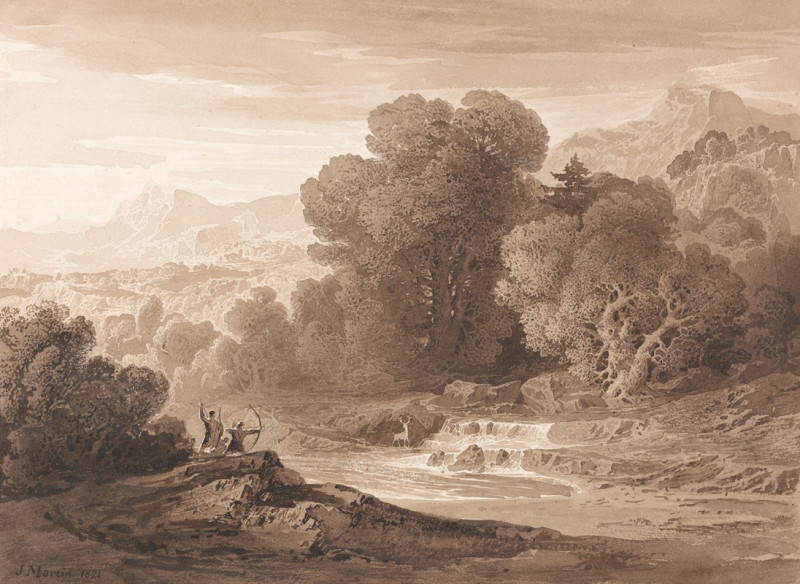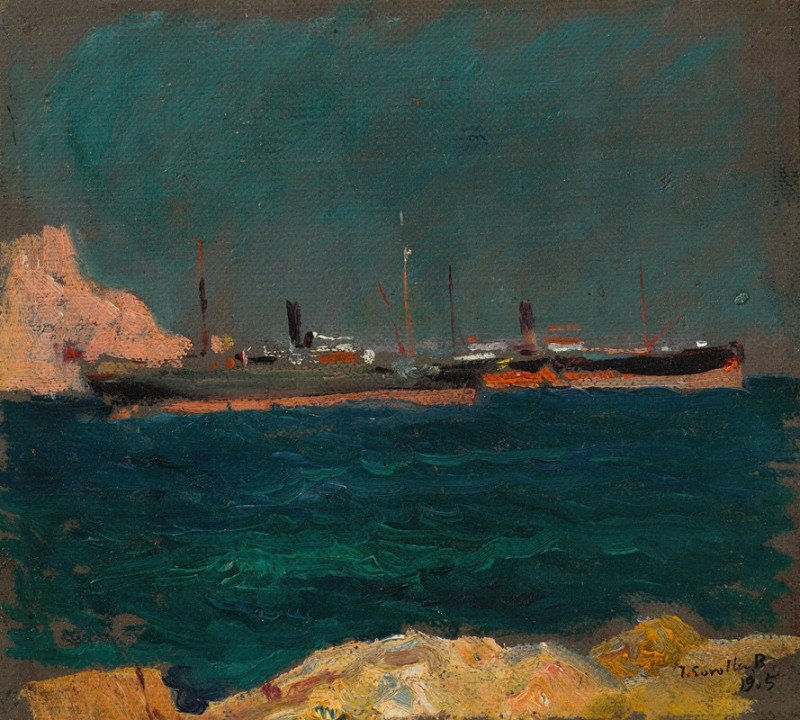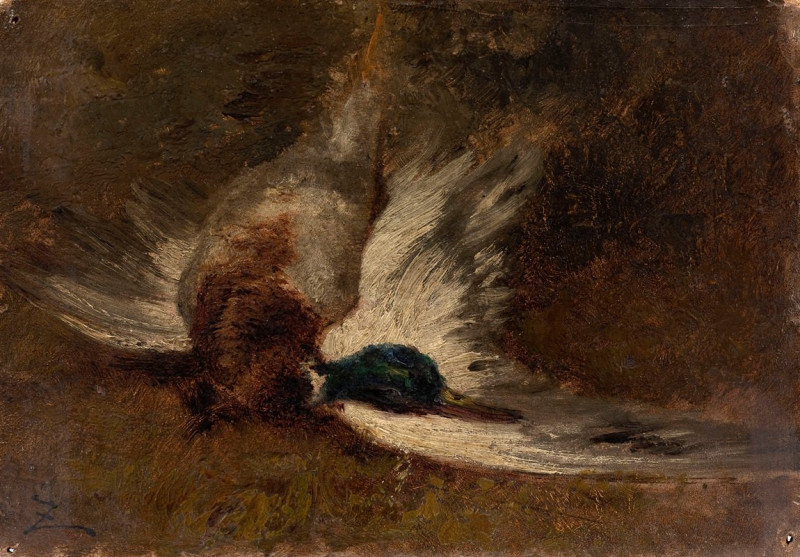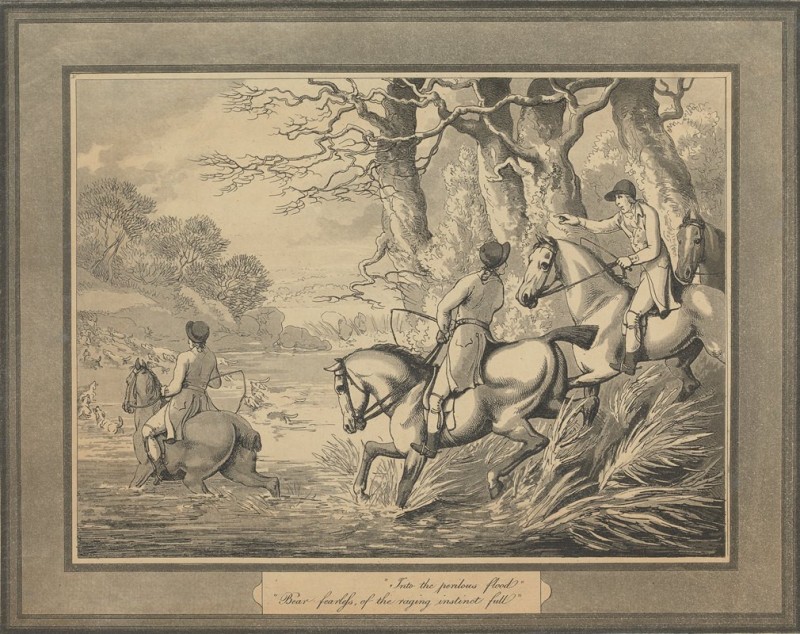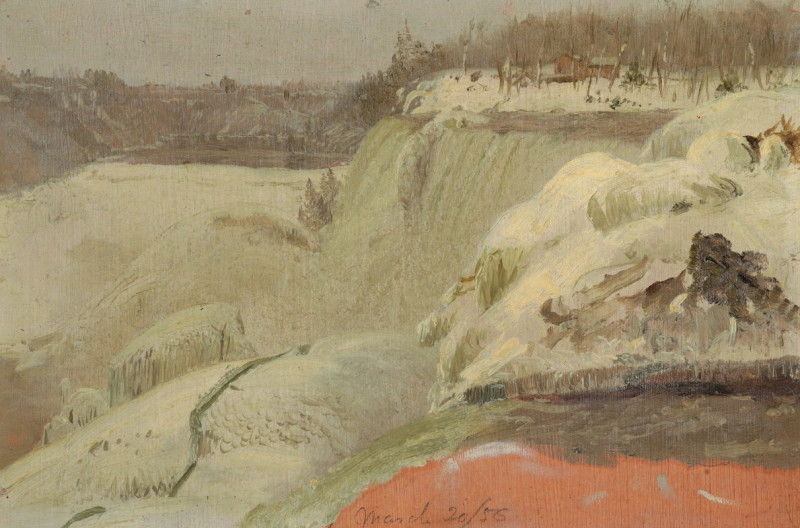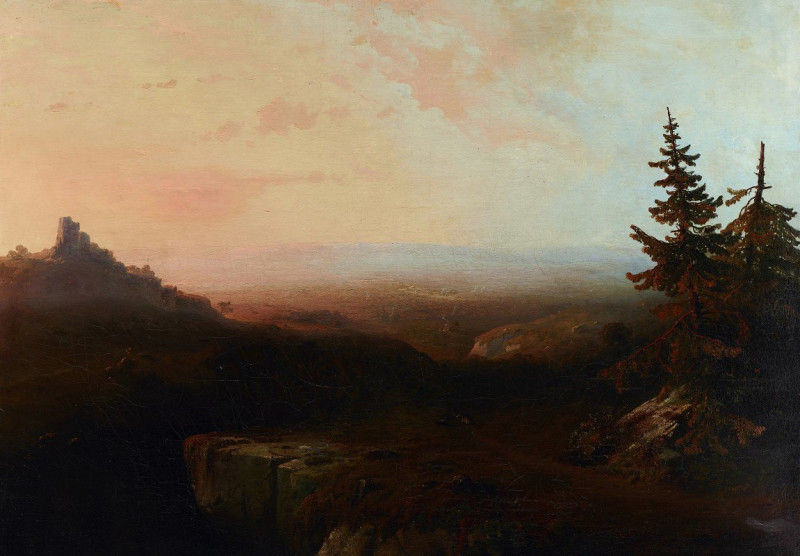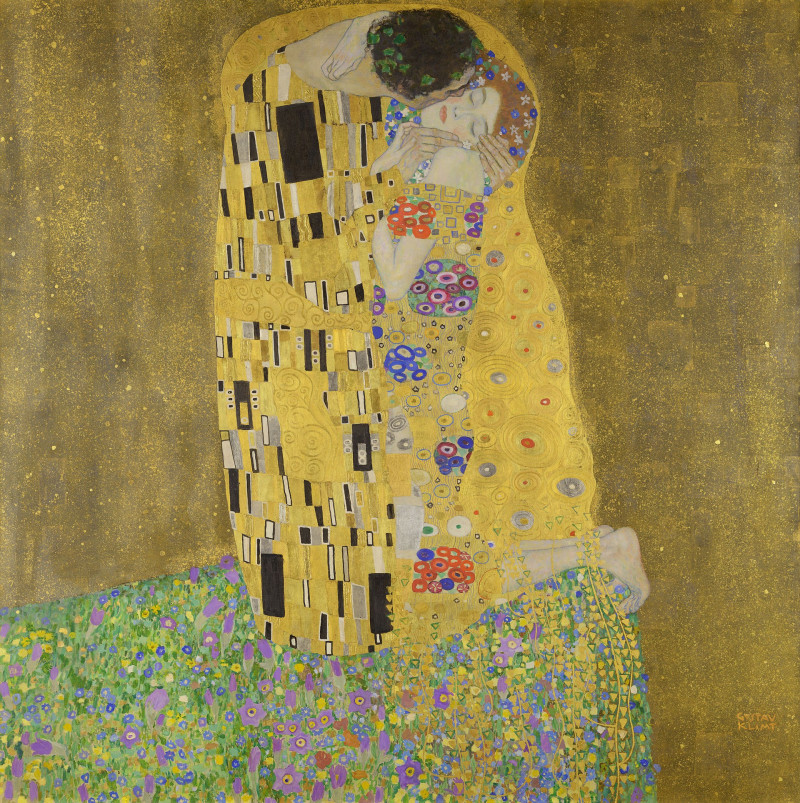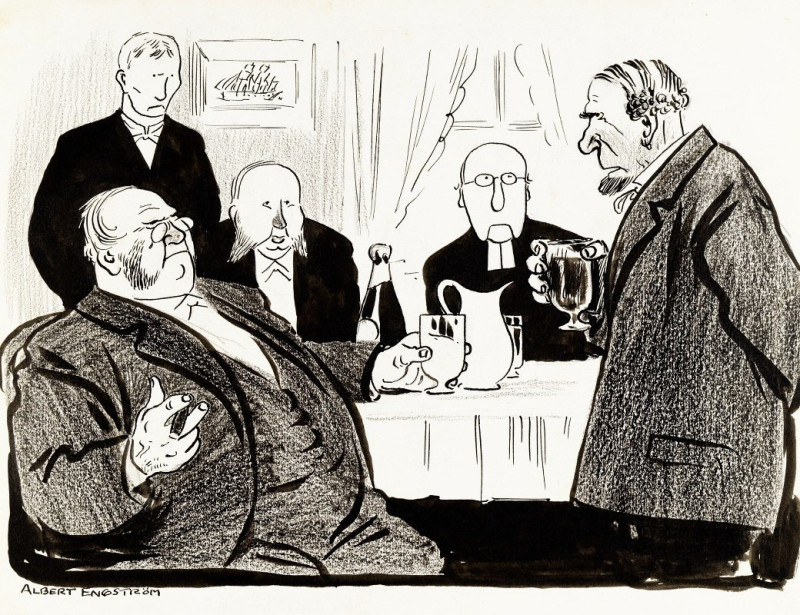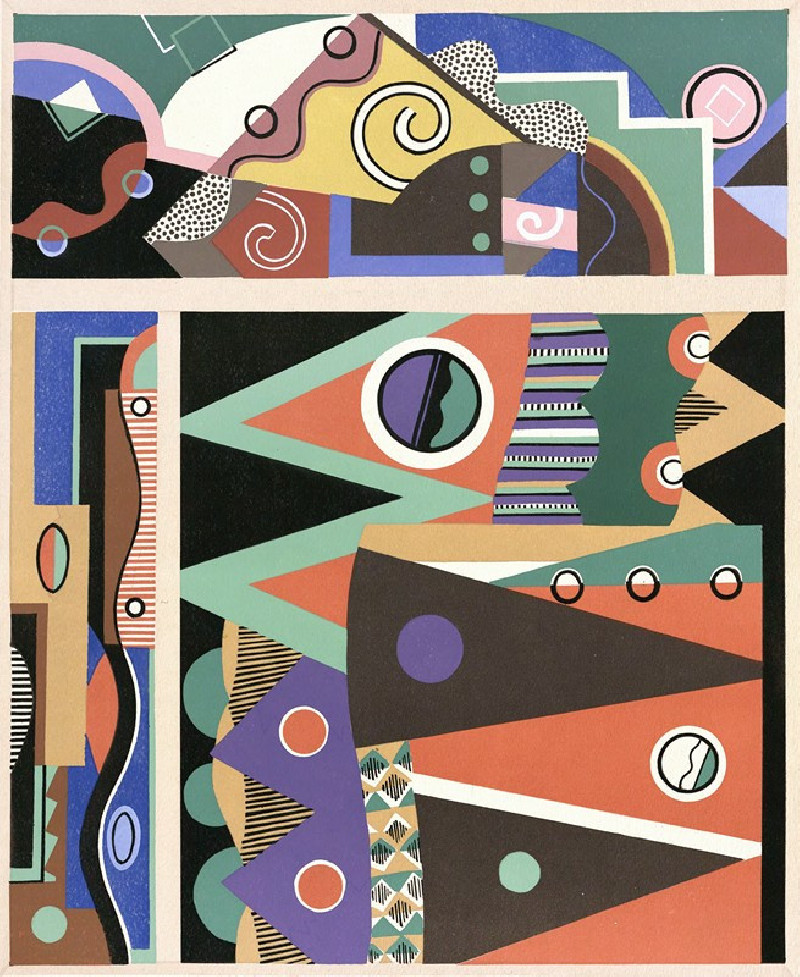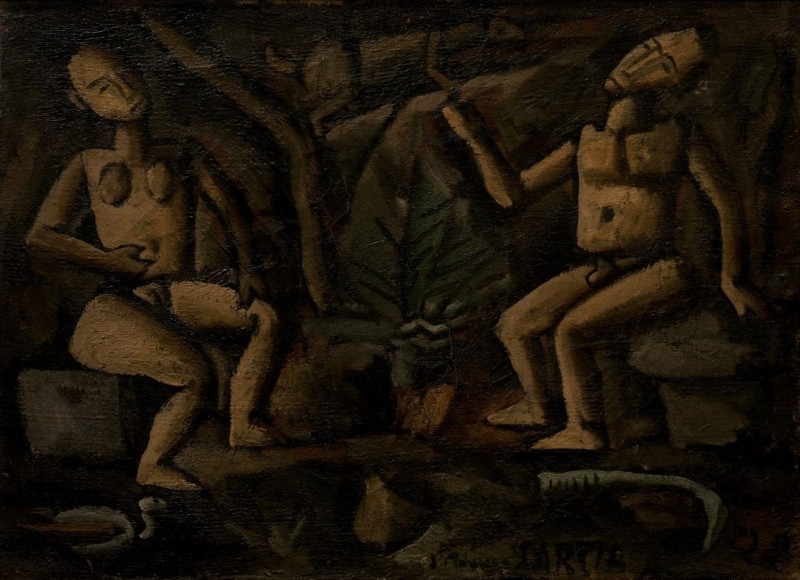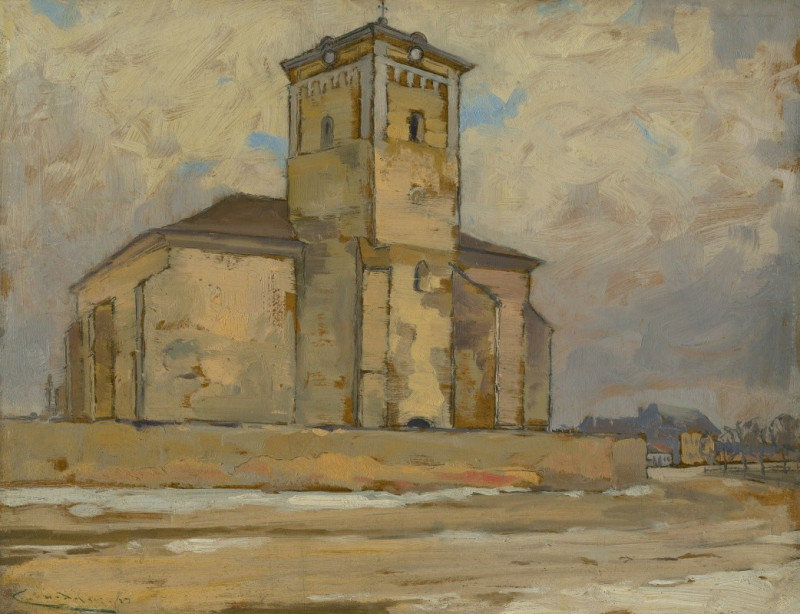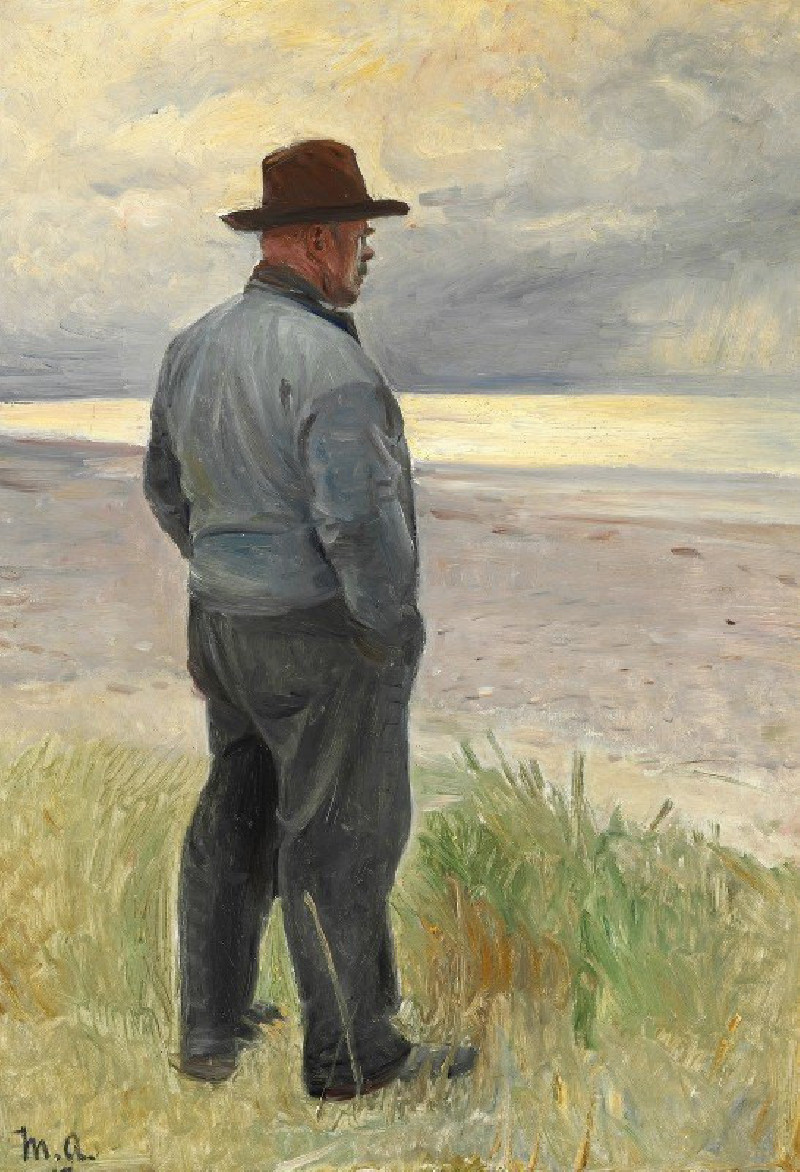The Destroying Angel (1836)
Technique: Giclée quality print
Recommended by our customers
More about this artwork
John Martin's engraving, "The Destroying Angel," created in 1836, offers a powerful visual narrative drawn from biblical stories, showcasing the artist’s fascination with dramatic and apocalyptic themes. This particular piece illustrates a scene inspired by the Book of Exodus, where a divine force sweeps over an ancient city to enact divine retribution.The artwork is masterfully divided into two main areas, the heavenly and the earthly. Dominating the upper section is the figure of the Destroying Angel, depicted in motion with a sweeping gesture that suggests both grace and power. The angel is drawn with ethereal qualities, shrouded in flowing robes that blend with the streaks of light, which pour down onto the city below. This use of light not only emphasizes the heavenly origin but also acts as a visual tool to guide the viewer’s eye towards the turmoil on the ground.Below, the city is rendered with meticulous attention to architectural detail, suggesting a scene set in ancient Egypt as evidenced by the pyramids in the background. The city, portrayed during the dead of night, stands sharply against the devastation wrought by the angel’s passing, which is suggested by the streams of light and shadow casting over the buildings.In the foreground, the earthly reaction to the celestial event is dramatically captured. Figures huddle and flee in despair, overwhelmed by the unfolding destruction. Their expressions and gestures convey a profound sense of terror and helplessness, serving as a stark human counterpoint to the supernatural force above them.Martin's "The Destroying Angel" is not just an artistic interpretation of a biblical story but also a commentary on the overwhelming power of divine forces over human lives.
Delivery
Returns
John Martin was an English Romantic painter, engraver and illustrator. He was celebrated for his typically vast and melodramatic paintings of religious subjects and fantastic compositions, populated with minute figures placed in imposing landscapes. Martin's paintings, and the prints made from them, enjoyed great success with the general public—in 1821 Thomas Lawrence referred to him as "the most popular painter of his day"—but were lambasted by John Ruskin and other critics.

